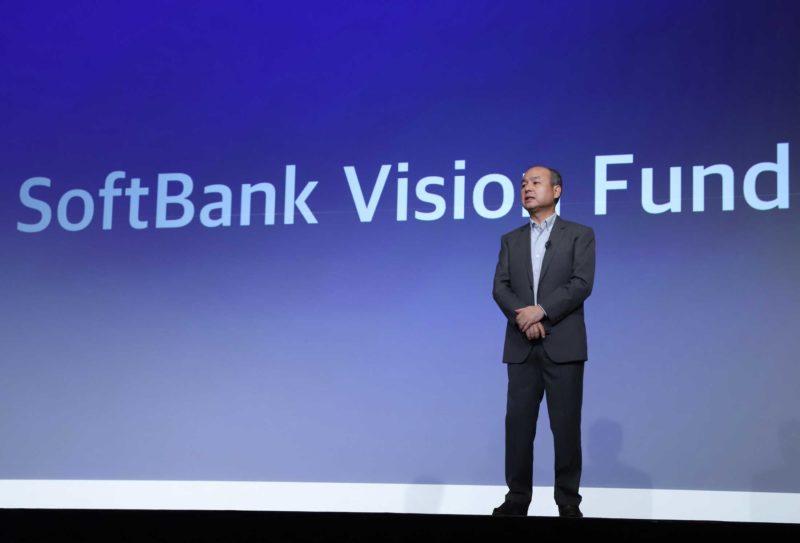The Great Lesson of Vision Fund

The debate between capitalism and socialism has recently become reinvigorated, with nearly 40% of Americans having a favorable view of socialism versus capitalism. This favorable view exists even with a high profile example – Venezuela – continuing to descend into chaos and causing unimaginable levels of human suffering along the way. Further worrying are the 70% of millennial Americans that have a favorable view of socialism, even with the history of its failures well- documented.
Central planning, whether it is called communism, socialism, or democratic socialism has a consistent history of failure, but the concept of central extends beyond the realm of governmental scope creep. Although central planning might, and correctly so, normally be linked to governmental initiatives this only represents a partial view of the situation. Possibly flying under the radar when compared to the failures of government led central planning, central planning has also appeared in the private sector.
It’s important to draw a clear distinction between the horrors of nation-state central planning and the financial damages that can result from a botched private sector grand vision. When a nation fails, or the central plan it supports fails, it can cause famine, millions of deaths, and the breakdown of society. In the private sector the damage, however buzzworthy, is limited to financial losses. Additionally, following the failure of a private sector central plan, the remnants of organizations and remaining financial resources usually end up in the hands of more capable, nimble, and market-oriented organizations.
A simpler approach would be to let the market allocate capital from the beginning, but that is not always the reality.
Private sector central planning
Paradoxical as it sounds, there is an example of just how spectacularly an “inevitable” private sector central planning process has already failed. Consumers and investors probably have heard of organizations like Uber, WeWork, and Slack, but might not have heard of the organization that has bankrolled the parabolic rise in valuations of these and numerous other private firms.
The Vision Fund, a project helmed and enthusiastically supported by Masayoshi Son, the CEO of Japanese conglomerate Softbank, has been taking the private equity world by storm since its announcement in October of 2016. Raising and investing over $100 billion from a global pool of investors was an unprecedentedly ambitious project in its own right, but looking under the surface reveals an additional goal. By raising so much capital, and investing so much of it into private organizations, the Vision Fund sought to shape the development and direction of the technology sector on a global basis via its role as kingmaker.
Viewed through a different lens, the Vision Fund sought to – simply by throwing enough money around – control and direct the future of several different industry sectors of emerging importance. Alas, the best laid central plans and directives never seem to survive intact once they encounter market forces. Recent performances, or the lack thereof, emphasize the reality that talking up a company is not enough; it must actually deliver satisfactory financial results.
WeWork has been discussed ad nauseum across the financial media, but the firm never would have received a valuation of over $40 billion, nor would it have fallen so spectacularly back to Earth without the nearly $10 billion that the Vision Fund invested in the project. Uber, once considered the unrivaled darling of the so-called unicorns, is trading well below its IPO price as it continues to hemorrhage cash and print oceans of red ink. The Vision Fund invested, along with others, billions of dollars into this organization while it was still private. Slack may be a popular enterprise tool, and may have soared during its IPO in June of 2019, but has since plunged following disappointing earnings and sluggish growth forecasts; rosy forecasts eventually have to translate into actual results. Just recently a Vision Fund- supported organization – insurance company Lemonade – has postponed IPO plans citing “market conditions.”
Attempting to centrally direct and plan the future of organizations and industry sectors may work on paper, or on a slide deck, but cannot factor in the realities of competition, consumer choice, and market scrutiny. Financial damages and other negative externalities are an inevitable result of any single entity attempting to plan for everyone else, be they consumers or citizens. These financial damages, however painful, represent a reality check and method by which the market can respond to master plans of private sector actors.
This is not to say that the Vision Fund is doomed, nor that the future of investing in private organizations is in peril, but rather that the scope and methods of doing so need to evolve. In fact, the fund has paper and realized gains that have a combined total of billions of dollars, and continues to be an important player and force in the private financing of high- growth startups.
That said, repeating many of the same errors associated with prior bubbles; investing for growth without concern for profits, accepting non-GAAP and other unusual methods of judging performance, and glossing over structural issues is a recipe for the same result. Assigning responsibility for the frothy private markets and the negative spillover effects in the public markets to one entity is nonsense; the Vision Fund is a symptom of broader market conditions.
Vision Fund 2.0s
In more normalized market conditions not constantly nudged and managed by central bankers, the appeal of allocating such enormous amounts of capital to unproven organizations with dubious business models would diminish. Financial discipline, developing business models that deliver value to consumers and investors alike, and realistic growth forecasts continue to be distorted thanks to the meddling of non-market actors.
The Vision Fund, despite recent negative headlines, is moving along with raising capital for its second fund that seeks to continue its investment strategy toward organizations developing solutions in emerging areas. Masayoshi Son has publicly stated that the Vision Fund 2 will be more cautious with new investments, and focus more on traditional metrics of sustainable growth and profitability. This is a welcome development, and is hopefully indicative that the new fund will function more like a traditional investor rather than central planning kingmaker.













